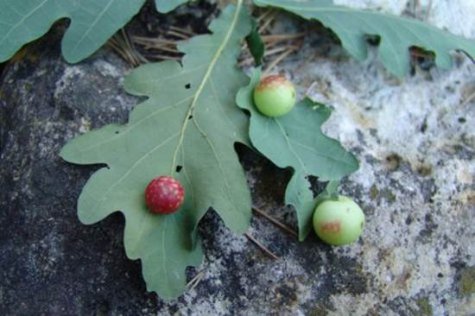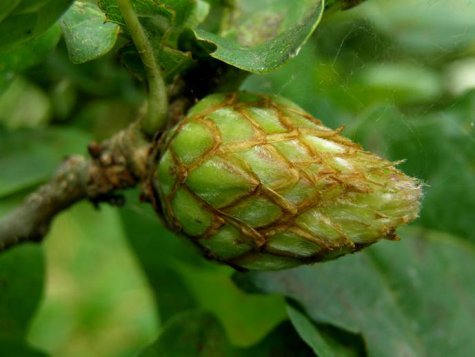Oak galls
Photo Epp Harmon
Translation Liis
Oak galls or oak apples
Oak gall wasp Tamme-pahkvaablane Cynips quercusfolii or Diplolepis quercus-folii
Oak gall wasps are small membrane-winged insects, of the Hymenoptera or membrane-wing order. In spring the females lay eggs on the underside of oak leaves, in the leaf tissues; from the eggs grub-like larvae hatch. They feed on the plant tissues, releasing growth-accelerating substances for their own protection that interfere in the normal growth of the tissue, making it grow out of contro. On the oak leaves egg-like shapes form (sometimes also called apples) – galls in which the larvae can develop securely. The galls are attached to the leaf by a tiny stalk and nutrients flow along this.
Several similar species of gall wasps live on oak leaves as well as in the buds.
In some years cone-like formations can be seen on oaks; they are caused by species Adricus fecundator.
The female gall wasp in this case lays her eggs in the male flower buds of the oak. Similarly to the case described above, a cone-like formation evolves that is also called a gall.
Photo from Wikipedia
Why do we call the coloured galls ”ink galls”? If the galls are picked, dried, ground and boiled and ferrous vitriol (iron(II) sulphate) is added to the boiling water a black, unfading ink is obtained.
Scientists have not noticed that the galls harm the mighty oak trees in any way.










